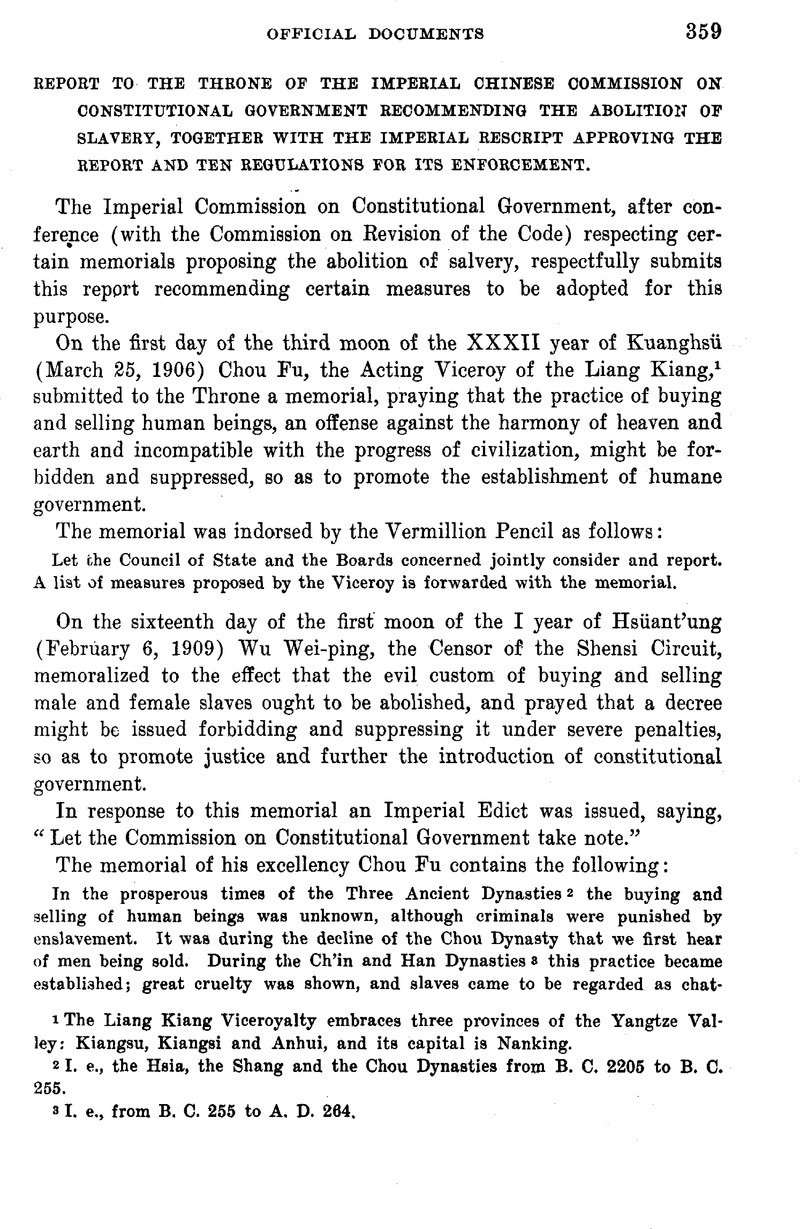No CrossRef data available.
Article contents
Report to the Throne of the Imperial Chinese Commission on Constitutional Government Recommending the Abolition of Slavery, Together with the Imperial Rescript Approving the Report and Ten Regulations for its Enforcement
Published online by Cambridge University Press: 04 May 2017
Abstract

- Type
- Other
- Information
- American Journal of International Law , Volume 4 , Issue S4: Supplement Official Documents , October 1910 , pp. 359 - 373
- Copyright
- Copyright © American Society of International Law 1910
References
1 The Liang Kiang Viceroyalty embraces three provinces of the Yangtze Valley: Kiangsu, Kiangsi and Anhui, and its capital is Nanking.
2 I. e., the Hsia, the Shang and the Chou Dynasties from B. C. 2205 to B. C. 255.
3 I, e., from B. C. 255 to A. D. 264.
4 I. e., not stamped with the seal of the local official which gives legal force to a document.
5 Two prefectures in the province of Anhui.
6 Certain outcasts whose origin is obscure, believed to be descendants of rebels of the Twelfth Century A. D.
7 Until the recent revision of the code, the penalty for certain grave offenses required that the near relatives of the criminal should be given as slaves to meritorious officials.
8 Although the feudal system of China was abolished 225 B. C, the conquest of the Empire by the present Manchu Dynasty tended to revive it in the northern
9 The Six Canons of the T'ang Dynasty.
10 A. D. 1662-1723.
11 As in the case of a free woman who marries a slave


